Abstract
There is a significant relationship between human health and the environment. There are various environmental factors that affect the health of the population. They include the quality of air, weather, seasons, temperatures, humidity, and vegetation (MacDonald & Farah, 2012). Some health issues are specific to certain environmental conditions.
As such, it is important to analyze these interactions in order to be able to anticipate health issues that may arise as a result of change in the prevailing environmental conditions. Abu Dhabi has a desert environment. Summer is experienced June and September. At the time, the environment is extremely hot and humid. Temperatures may rise to an average of 38°c.
Sandstorms are also common in the city. Winter occurs between November and March. Conditions change drastically from hot to extremely cold (Davidson, 2005). Dense fog may be witnessed at times. January is the coldest month in Abu Dhabi, while August and July are the hottest.
In this paper, the author analyses the data collected from Abu Dhabi in a study to determine the link between the environment and human health. The author provides a scientific description of the data represented in the figures generated using MatLab program.
Analysis of Data
The data for this section was sourced from SEHA.
Reported cases of asthma in Abu Dhabi public hospitals
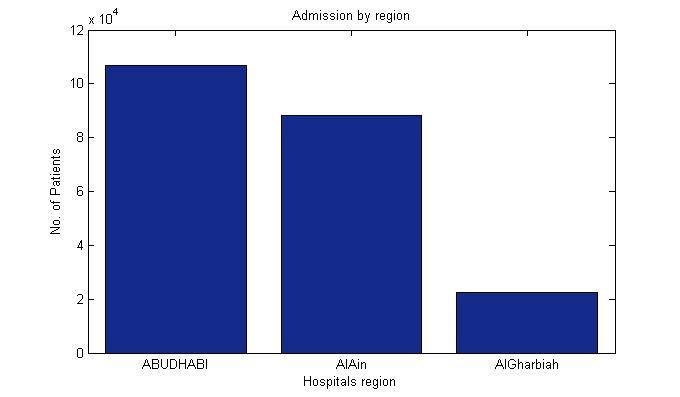
The figure above shows the number of admissions for asthma per region. The three areas stated in the figure are some of the major municipalities in the Emirate of Abu Dhabi. They are Abu Dhabi, AlAin, and AlGharbiah. From the figure, it is clear that there are significant variations in the prevalence of this health condition in Abu Dhabi (Heinrich, 2010).
Abu Dhabi records the highest cases of asthma within the Emirate. The figure stands at 10*104 (Heinrich, 2010). AlAin comes second with slightly more than 8*104 cases. Hospitals in AlGharbiah recorded the lowest number of patients suffering from asthma at 2*104 cases.
Asthma is a chronic respiratory health condition. It is characterized by inflammation of the airways. As a result, it leads to bronchospasm. In some cases, it may lead to irreversible airflow obstruction. There are various symptoms associated with the condition. They involve constriction of the chest region and coughing. During asthma attacks, patients report shortness of breath. (Heinrich, 2010).
The three municipalities whose data was analyzed have varying environmental conditions. The variation explains the differences in number of asthma cases reported in the area. The city of Abu Dhabi has the highest number of incidences. The increased occurrence of the health condition in the area can be attributed to such environmental factors as poor air quality.
The main reason for this is that the city is the region’s capital. As a result, most of Abu Dhabi’s commercial activities take place here. Consequently, there is a lot of air pollution resulting from gasses emitted by traffic within the city (Heinrich, 2010). The city of Abu Dhabi also has a larger population than any other in the region (Heinrich, 2010).
From the study, the researcher sought to establish the number of persons suffering from asthma, rather than their proportion. In this case, the figure indicated on the graph is not a reflection of the percentage of the population admitted in hospital for asthma attacks. The city has an expansive population. As such, the number of asthma cases reported is expected to be much higher than in other urban areas.
In this case, it would be possible that the proportion of the population suffering from asthma in the city was much lower than that recorded in other cities in the region. Incidences of asthma in hospitals in the AlAin region are also high. However, they are slightly lower than those in Abu Dhabi. The reason behind this is that AlAin is the second largest city within the Abu Dhabi Emirate region.
The city is also second after Abu Dhabi in terms of population density. As a result, the number of asthma cases reported in the area would be expected to be higher than that of smaller urban areas in the region provided all conditions remain constant. Considering that the three cities are located in the same region, the environmental conditions are almost similar. As a result, the most logical explanation for the results represented in the graph would be that the variations are as a result of differences in population density.
AlGharbiah region has the lowest cases of asthma in Abu Dhabi. The reason for this is that the environment is not as polluted as that in Abu Dhabi and AlAin. In addition, the city has the lowest population compared to the other two. The environment in the region is similar to that of the other two cities, Abu Dhabi and AlAin. Supposing that the proportion of the population suffering from asthma in the three cities was same, the city would still have the lowest number of admissions reported based on its low population density.
Incidences of asthma cases through the year
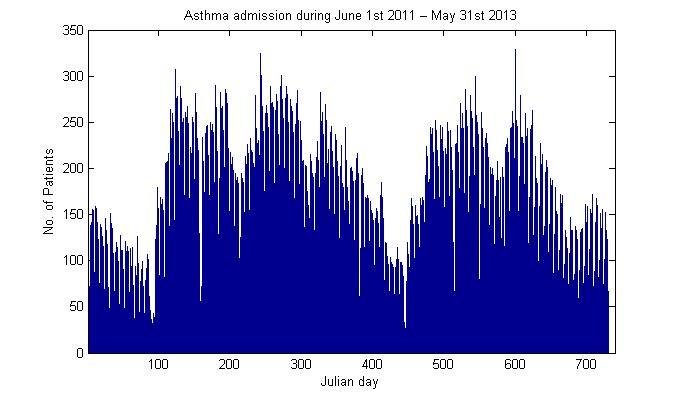
From figure 2, it is evident that cases of asthma are reported throughout the year in hospitals and clinics around Abu Dhabi. At no one point was there zero cases of asthma. The reason for this is that the prevailing environmental conditions support the development of the condition.
The weather in the city is often hot and humid. The humid conditions are explained by the fact that the region borders the sea. The hot weather aggravates matters by increasing rates of evaporation. Given that it is the region’s capital, a lot of commercial activities are taking place within the city.
For example, manufacturing processes take place in all seasons (MacDonald & Farah, 2012). The transport sector is also vibrant throughout the year. The commercial activities act as a source of environmental pollution, leading to cases of asthma throughout the year.
It is a fact that asthma cases are recorded all year round. However, it is important to note that some months record higher rates than others. The incidence of the condition is high in most parts of the year. However, the period between May and August has fewer cases. The region experiences summer at the time. Consequently, the weather is hot. There is no precipitation during these months (Heinrich, 2010).
Cases of asthma gradually increase in the month of October. The number of continues to rise until the month of April the following year. The reason is the onset of winter. Temperatures tend to decrease during this period. Precipitation also takes place, leading to increased amounts of moisture in the environment.
Combination of the two environmental factors promotes the development of the health condition. The cases then start declining until October when they start rising again. The trend is fairly constant over the years as a result of seasonality.
Occurrence by age group
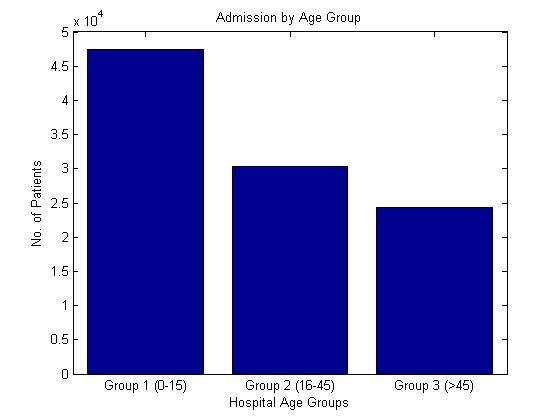
Figure 3 shows that asthma cases are more common among children than in adults. The number of admissions recorded decreases as one moves up the age group (Heinrich, 2010). People at the age of 0-15 years are at a higher risk of developing the condition than those who are older.
The reason is that their immune systems are weak and are still undergoing development. Most of these individuals are also most likely to be treated following their first asthma attacks. They are getting exposed to environmental agents causing the condition, such as dust, polluted air, and allergens (which include pollen), for the first time.
Their immune system has not encountered these agents before. As such, it is unable to respond to the invasion effectively. Asthma is also a genetic condition to some extent. At this age, genetic factors play a major role in the development of the health condition since the body’s immunity system is weak.
Persons aged between 16 and 45 report few cases of hospital admissions. Most of these individuals have already encountered their first attacks and the condition has recurred following exposure to environmental agents that trigger the attack (Davidson, 2005).
People at this age group are also mainly expatriates seeking employment opportunities in Abu Dhabi. The change in environment, especially the high humidity levels, leads to development of asthma. Individuals above the age of 45 have the lowest number of admissions. Their bodies have already adapted to the environment. The ones who suffer from the condition are also under medication. At this age, it is difficult for new infections to develop.
Types of hospital encounter in relation to asthma
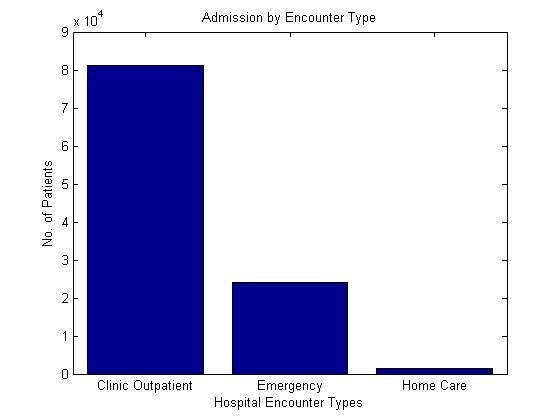
Admissions to the hospital following the onset of asthma can be encountered in three different ways. They include outpatient, emergency, and homecare. Outpatient cases are the most common (Heinrich, 2010). Most of these encounters consist of people who have just developed the condition following exposure to environmental agents.
At the time, the symptoms have not escalated. Emergency encounters are, on the other hand, mainly observed among persons who have developed the condition earlier. Exposure to environmental agents, such as pollen and dust, leads to mild attacks (Naish & Leith, 2010).
However, the number of these engagements is lower compared to clinic outpatient encounters. The reason is that the patients are already under treatment. The number of persons suffering from asthma in Abu Dhabi, and who are undergoing homecare, is lower than in all the other encounters. It consists of persons who have already adapted to the environment and are still under medication.
Asthma cases by gender
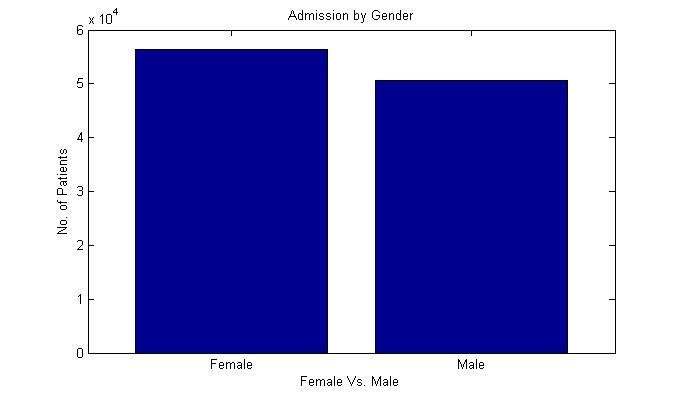
It is evident that both males and females develop the health condition (Heinrich, 2010). The reason is that genetic factors associated with the health condition are not sex-linked. However, cases of admission among females are higher compared to those among males, although the difference is minimal.
The immune system of men could be slightly more efficient than that of women. However, the most logical explanation is that women are more susceptible to the condition compared to men.
Temperature and Humidity (Humidex) Conditions in Abu Dhabi
The data for humidex and temperature was sourced from ground measurements. The measurements consisted of 10 min resolution data of GHI, DNI, and DHI available over five stations in the UAE. Only data from Station 1 was used. The station is located in the suburbs of Abu Dhabi. It is also close to the coastline.
Temperature readings
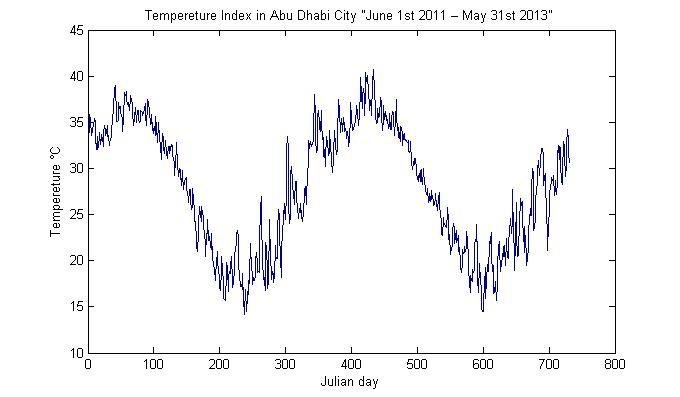
Temperature is one of the most important environmental factors that have an impact on public health. Some health conditions develop rapidly under hot conditions, while others are associated with cold (MacDonald & Farah, 2012). As a result, it is important to monitor the temperatures of a region in order to predict the nature of diseases.
In Abu Dhabi, temperatures vary throughout the year as illustrated in figure 6 above. The city is especially hot between June and September. The rise in temperatures during this period is attributed to summer. Temperatures then start to fall beginning from the end of September to early November when winter sets in. The situation persists until March when temperatures begin to rise in anticipation of the summer season.
Humidity levels in Abu Dhabi
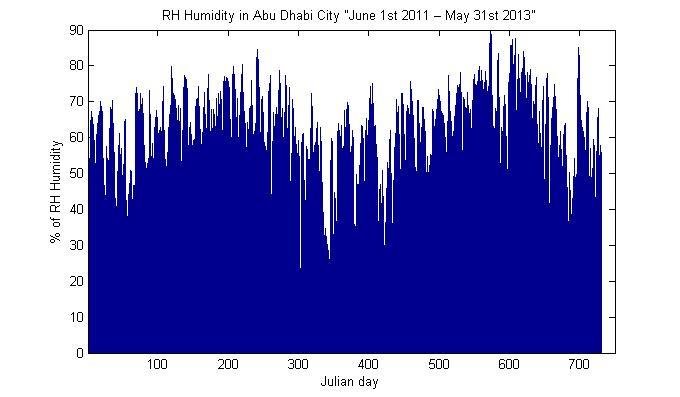
Humidity is considerably high in Abu Dhabi throughout the year. The reason is that the region borders the sea. The air is saturated with moisture evaporating from the water body. The highest levels of humidity are recorded between November and March.
The increase is attributed to the precipitation taking place during the winter season. There is low humidity between the months of May and September (MacDonald & Farah, 2012). The change can be attributed to the onset of the summer season, which is associated with little or no precipitation.
Humidex
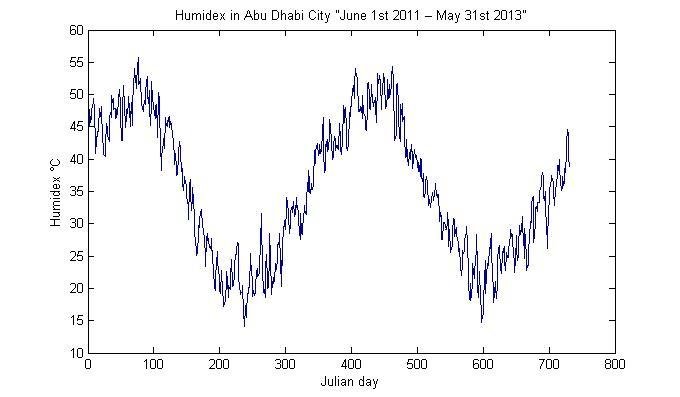
Humidex is highly dependent on prevailing environmental temperatures. In Abu Dhabi, this figure varies throughout the year. It can rise to 550 °C in summer. However, it can drop to about 15 °C during the winter season (MacDonald & Farah, 2012).
Humidex rises with an increase in temperatures. The reason is that high temperatures lead to more evaporation. In addition, hot air can accommodate more moisture compared to that which is cooler.
Vegetation Index in Abu Dhabi
Vegetation index data was collected using space ‘remote sensing’. LANDSAT was used for these purposes. Fourteen green patches around the city of Abu Dhabi were selected to determine changes in the density of green color. A mean value for those 14 patches was computed.
Green vegetation patches
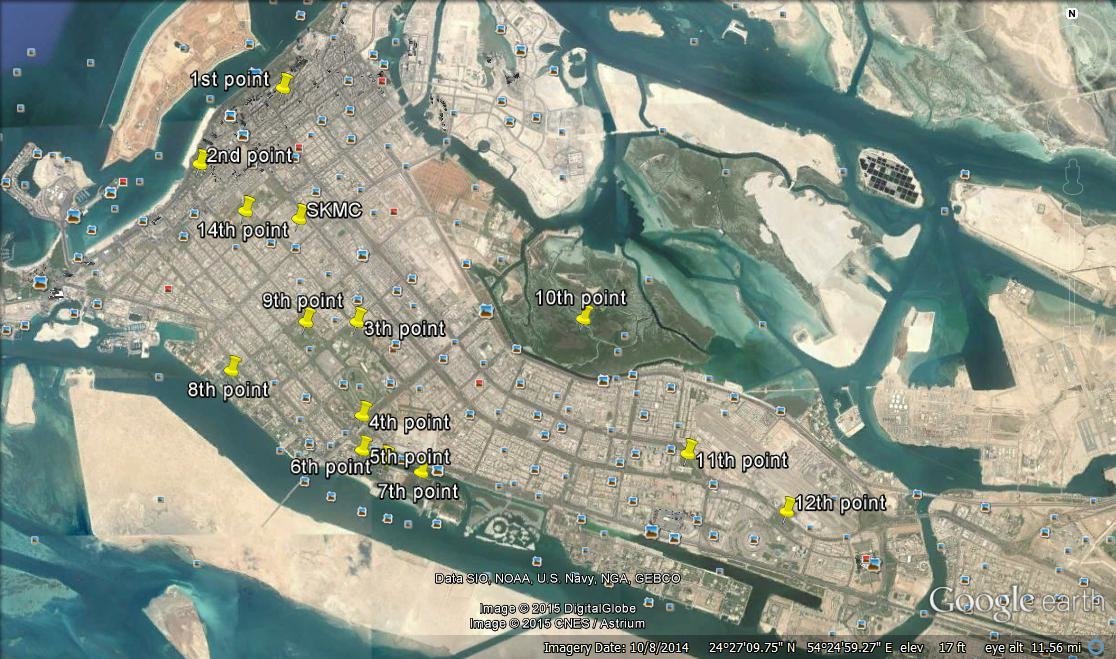
The city of Abu Dhabi is located within a desert. However, there are small amounts of green vegetation. The density of green in the vegetation patches around the city is constantly monitored (MacDonald & Farah, 2012). Monitoring is done through remote sensing from satellites. Ecologists in the region are able to evaluate the progression of vegetation throughout the year.
Vegetation points in Abu Dhabi
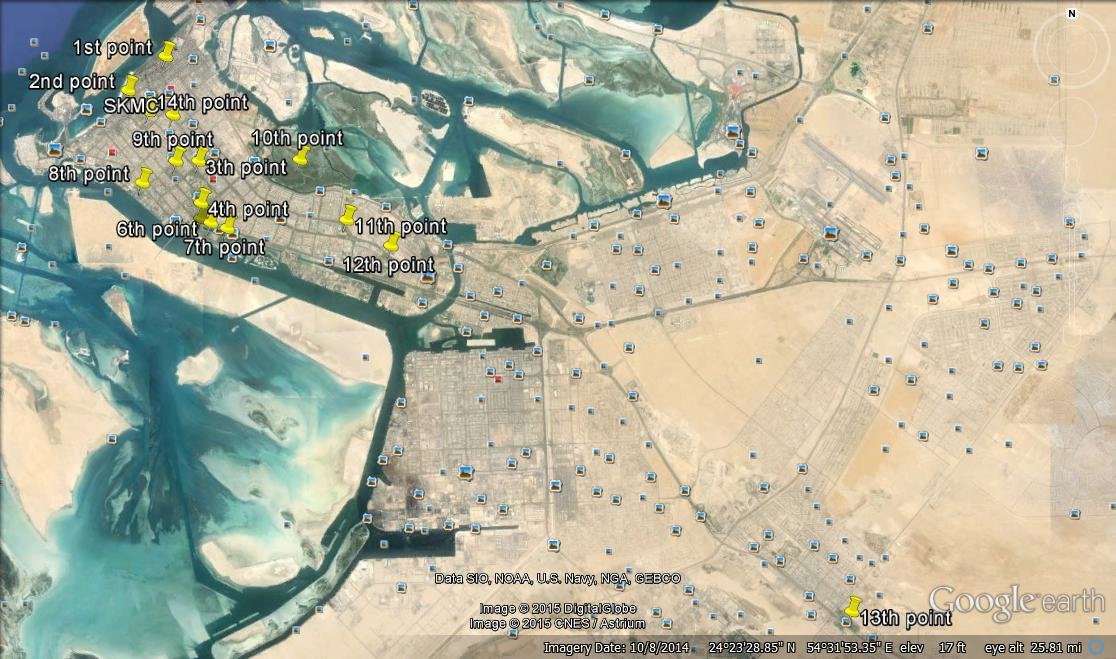
It is evident that Abu Dhabi has some vegetation. However, it occurs in form of patches spread across the region (Davidson, 2005). From space, the vegetation appears as small green patches. The reason why green vegetation is scarce in the region is lack of water. The situation is likely to worsen during summer.
NDVI of green areas in Abu Dhabi
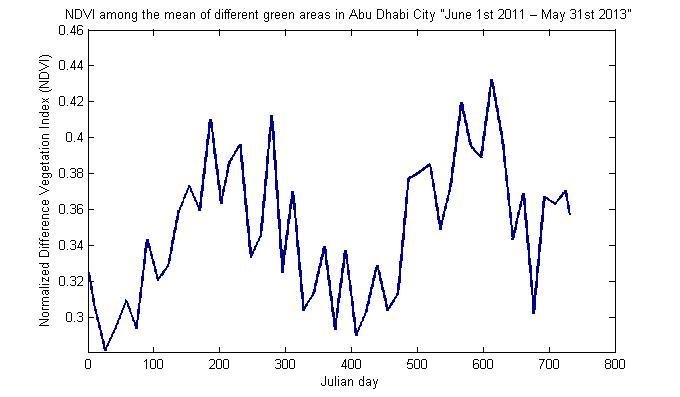
The acronym stands for normalized difference vegetation index. It assesses the green color within vegetation. The average NDVI for Abu Dhabi is about 0.36 (MacDonald & Farah, 2012). However, the values fluctuate throughout the year. They are high during winter and low in summer.
During winter, NDVI goes as high as 0.43. The reason is that there is enough water to support plants. During summer, the value drops to as low as 0. The value signifies the absence of green vegetation. The reason behind this is the drying up of vegetation.
Air Quality Concentration in Abu Dhabi
Air quality concentration (PM10, PM2.5, NO2, SO2, H2S, CO, O3) for the period between June 2011 and May 2013 was determined. The data for this section was obtained from the Environmental Agency of Abu Dhabi. The information was collected using air quality detention stations distributed across Abu Dhabi.
Concentration of PM10
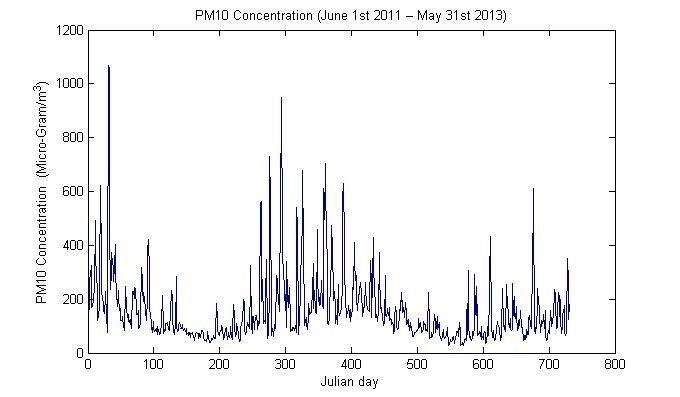
The presence of particulate matter (PM) in the environment may cause health problems. The threat is usually more serious when the particles are suspended in the air (Nash & Leith, 2010). Small particles can be respired and cause allergic reactions, leading to asthma and other respiratory complications.
PM 10 particles are fairly small. They are 10 micrometers across. They settle down on surfaces within a few minutes after suspension as a result of gravitational pull. Their concentration is high during summer. In Abu Dhabi, sand is the most common of these particles.
PM2.5
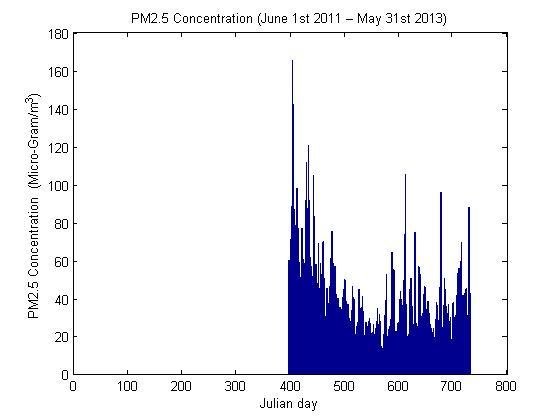
PM 2.5 particles are smaller and lighter compared to PM 10. As such, they occupy less volume in the air (Pickett & Bell, 2011). They are 2.5 micrometers in diameter. They do not easily settle on the ground. In addition, they may be suspended in the atmosphere for several weeks.
Like PM 10 particles, they are more concentrated in the atmosphere during summer. During winter, they are absorbed in rainwater and settle, making their concentration low.
NO2 in Abu Dhabi
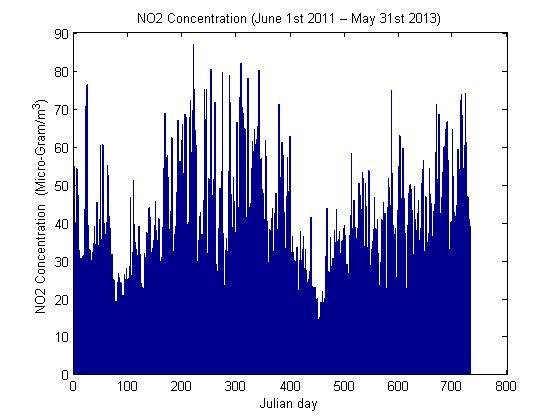
Concentration of nitrogen dioxide gas is fairly distributed throughout the year. The gas is generated from manufacturing activities (Pickett & Bell, 2011). It is heavier than air. However, it remains suspended in the atmosphere for long durations of time, especially during summer. Its concentration is significantly low during winter when it is dissolved in rainwater. In the process, it results in acid rain.
SO2 in Abu Dhabi
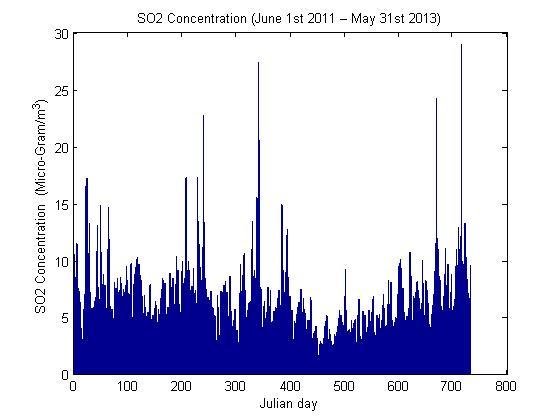
Sulfur dioxide gas occurs naturally in the atmosphere. It is released from the earth crust by volcanic action and other processes. Its concentration in the air varies with time. Human beings have no control over its concentration (Ott & Peters, 2008). The gas has an irritating smell and causes respiratory problems.
H2S in Abu Dhabi
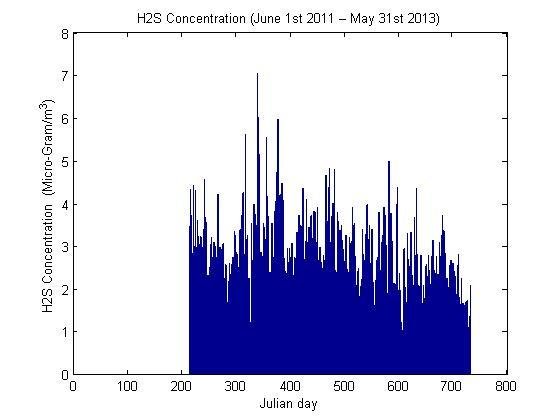
Hydrogen sulfide gas is another component that affects the quality of air. It is present in Abu Dhabi’s atmosphere throughout the year (Ott & Peters, 2008). The gas is naturally occurring and its production is not associated with human activities. Its main source in Abu Dhabi is natural gas. Considering that the region is one of the world’s major producers of natural gas, the component cannot be avoided.
CO in Abu Dhabi
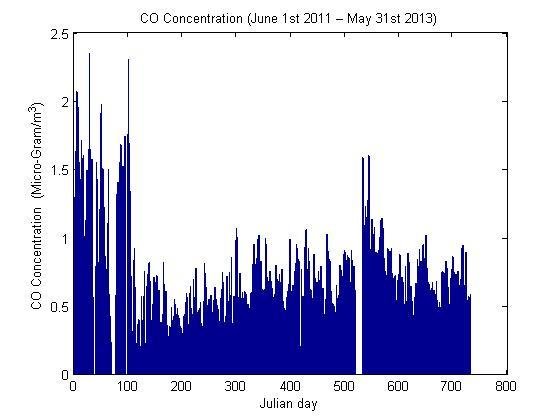
The gas is usually produced following partial oxidation of carbon substances (Pickett & Bell, 2011). In this case, there is no enough oxygen to produce carbon dioxide. Most of the oxidation takes place during combustion. In Abu Dhabi, the gas is present in the atmosphere throughout the year.
The main source is partial burning of fossil fuels, which are normally hydrocarbons, in manufacturing industries and automobiles. The gas remains suspended in the atmosphere for a short time. That is why its concentration is low. During the winter season, it is dissolved in rainwater, reducing its concentration in the atmosphere.
O3 concentration in Abu Dhabi
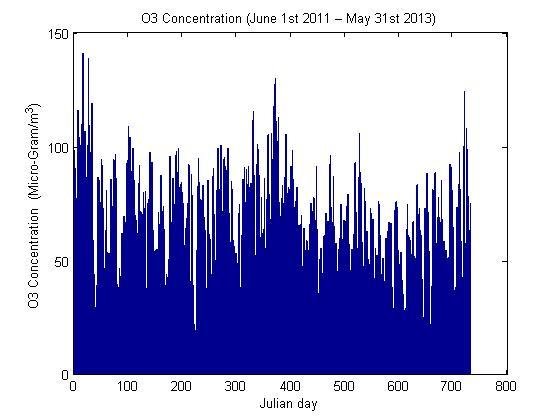
Ozone gas also occurs naturally in the atmosphere. Its concentration is relatively low. The reason is that it is unstable and is quickly converted into oxygen. It has a pungent chocking smell that irritates the respiratory system, causing health conditions, such as asthma.
Conclusion
There is a significant relationship between the environment and human health. People must understand this interaction for them to improve their quality of life. Asthma is one of the health conditions caused by environmental factors. It is mainly associated with humidity and temperature.
The condition is common in Abu Dhabi. The environment of this region is seen as the major cause of the disease. The area is a desert and experiences frequent sand storms. The city also borders the sea. With the high temperatures experienced here, a lot of evaporation takes place, raising humidity levels. The resulting conditions are favorable for the development of asthma. Other environmental factors that lead to the health issues include the quality of air and vegetation.
References
Davidson, C. (2005). The United Arab Emirates: A study in survival. Boulder, Colo.: Lynne Rienner Publishers.
Heinrich, J. (2010). Air pollution, asthma, and allergies in children. Occupational and Environmental Medicine, 67(3), 290-291.
MacDonald, J., & Farah, Z. (2012). Environmental risks to public health in the United Arab Emirates: A quantitative assessment and strategic plan. Environmental Health Perspective, 120(2), 681-686.
Nash, D., & Leith, D. (2010). Ultrafine particle sampling with the UNC passive aerosol sampler. Aerosol Science and Technology, 44(1), 1059-1064.
Ott, D., & Peters, T. (2008). A shelter to protect a passive sampler for coarse particulate matter, PM10-2.5. Aerosol Science and Technology, 42(7), 299-309.
Pickett, A., & Bell, M. (2011). Assessment of indoor air pollution in homes with infants. International Journal of Environmental Research and Public Health, 8(2), 4502-4520.